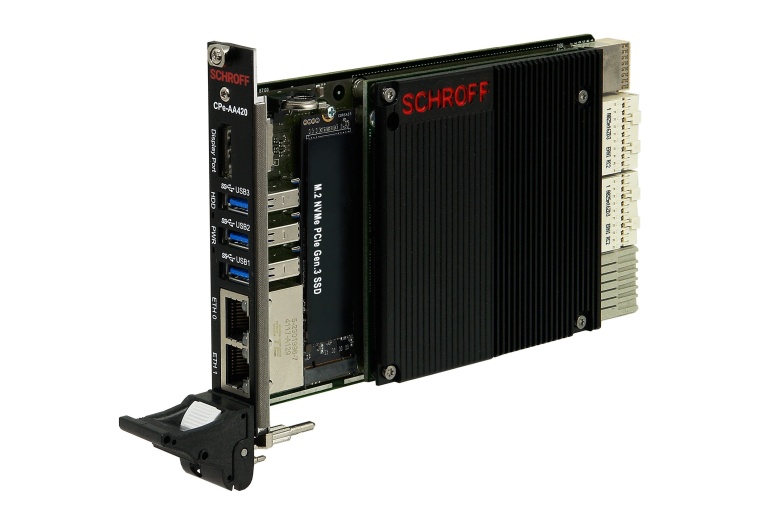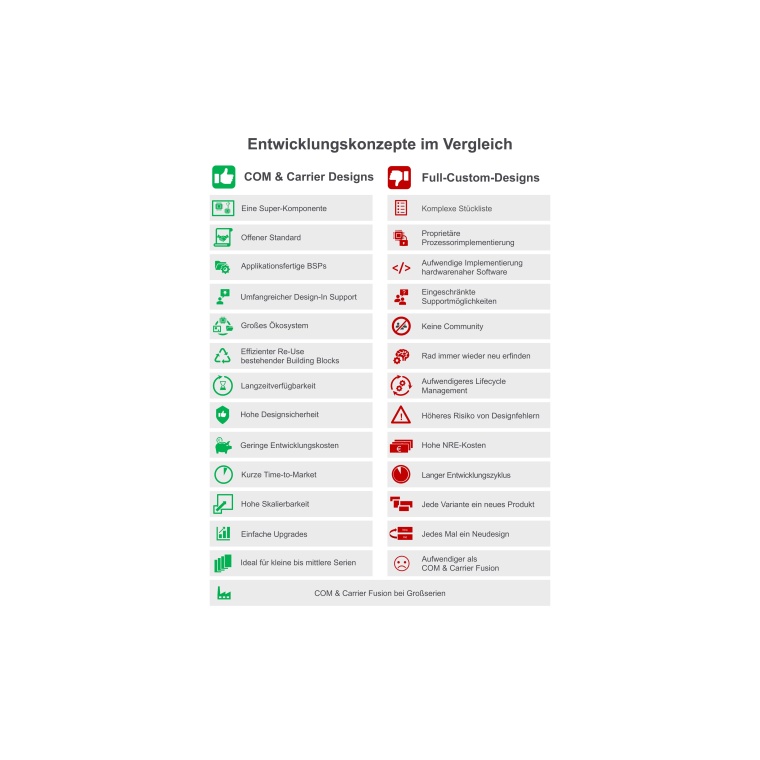Companies Jointly Develop Slim Controller for More Space in PXI Express Systems
In the PXI Express housing, it's all about making the right use of the limited space. Together with an IPC partner, a housing manufacturer has now developed controller cards that are particularly narrow.
For case and backplane specialists like nVent Schroff, CPU assemblies are rarely a focus. However, they are experts when it comes to routing high-speed interfaces such as PCI Express or even 25 GbE over longer distances. This background knowledge also allows nVent to develop custom carrier board designs that intergrate the CPU via computer-on-modules. The carrierboard design focuses on connecting the interfaces to the COM module via high-speed links. By using Computer-on-Modules, it was therefore also easy for nVent Schroff to address the need of its PXI Express customers to provide significantly flatter assemblies for the system controller than were previously available on the market.
Different markets, different customs
For backplane systems that are comparable to PXI in terms of structure, such as VPX, VME or CompactPCI Serial, there is no shortage of flat-build system controllers, because the CPU module manufacturers who focus on the application fields regularly address it. PXI Express, however, is structurally different. Experts for PXI are experts for test and measurement systems. Their main focus is on test software and the wide range of I/Os. The central controller boards are more a means to an end. Therefore, they often simply use a notebook or desktop PC, which they connect to the PXI Express measurement system, which only houses expansion cards. Or they directly design the controller as a PXI board so extensively that it virtually fulfills and often even exceeds all needs. 3U CPU modules for PXI therefore tend to be 8 or 12 HP wide, while they are also available in a narrow 4 HP for VPX, VME or CompactPCI Serial.
Less is often more
Many companies deliberately use such extensive controllers in 8 or 12 HP because they can cover as many use cases as possible. However, this only works as long as space is not a critical requirement. Or as long as the quantities per dedicated measurement system are not so large that every component has to be looked at in order to save money. But there are many applications where space is scarce. For example those where the modules have to be particularly flat because the system itself has to be only 1U or 2U high.Typical use cases of such space-saving systems are found in the automotive sector, where the systems are installed in prototypes so that developers can test their new radar, lidar and other optical sensors that are needed for autonomous driving. In such systems, as many TE as possible must be saved because the width of the assembly determines the height of the system because it is installed horizontally rather than vertically.
Saving space is the order of the day
Even in systems with 8 slot 3U, space is scarce. CPU modules with 8 to 12 HP quickly block two to three slots, so that the system either has to be wider or only a few slots are available for expansion, which is not sufficient for many test and measurement tasks. It is therefore often desirable to be able to accommodate more I/Os in a small space in order to avoid having to build double-story systems and thus occupy more space in the rack. Users often help themselves with a workaround and install adapter cards. These lead PCI Express lanes to the outside, so that a normal notebook or desktop PC can be connected via external standard cables.
Achieving the goal with COM and Carrier
To solve this space problem, nVent has developed a 3U 160 mm PXI carrier for COM Express Compact modules in cooperation with Congatec. It was optimized in a first step for the Conga-TC175 to realize a powerful and compact controller based on the 7th generation Intel Core processors. Towards the backplane, only the PCIe lanes required for the PXI Express system design were routed. On the front panel, the slim platform only offers Displayport for display connection, three USB interfaces, two Ethernet interfaces and with an M.2 slot for fast SSDs, the feature set is already complete, so that nVent was able to create an extremely slim but powerful PXI SBC, which fully concentrates on the core functions needed for a central CPU unit in a PXI system. Thanks to the modular design, customers can now choose any Intel core processor configuration as needed, with a maximum TDP of 15 watts. This has enabled the board to be built very flat, in order to keep within 4 HP, including the cooling.
Variety is the program
The program has now been expanded to include a variant with the Conga-TS370 in COM Express Basic format, which currently allows Intel Core processor technology up to six-core solutions of the 8th generation and thus also enables system setups even with virtual machines. This high scalability without re-design, even across processor generations, is a huge advantage for nVent as it reduces the development effort. As a result, nVent can offer upcoming solutions based on COM Express Basic and Compact modules from Congatec more quickly as off-the-shelf modules with less development effort. The COM and carrier principle also allows individual variants to be implemented with justifiable time and cost expenditure, so that nVent has created a thoroughly attractive offer with its COM Express-based controller modules for PXI systems, which solution providers of full-custom PXI controllers could probably only implement more cost-effectively in mass series. In addition, nVent also sees the advantage of being able to implement new processors more quickly, as modules are often the first products to become available with the latest embedded processor technology, and the slim design is ultimately also more cost-effective than full-blown 8TE or 12TE SBCs. nVent's customers also benefit from the modular approach, as they can ultimately scale across modules based on the carrier, better balancing price and performance when in doubt, as there are significantly more variants within a module series of a processor generation than a PXI CPU board manufacturer could ever offer with full-custom designs.
Further prospects
If the nVent concept is successful, there is also potential to offer it in the test and measurement sector for the AXI and VXI standards, which together with the top dog PXI make up the so-called "modular instruments" market with a share of around 78 percent. A large part of this is accounted for by the telecommunications market, which, according to Grand View Research, accounts for around 35 percent of the total market. Other markets are primarily aerospace and defense, automotive and transportation, and electronics and semiconductors. Expanding the range in the direction of VME, VPX and CompactPCI Express would also be an option.
Author
Zeljko Loncaric, Marketing Engineer











